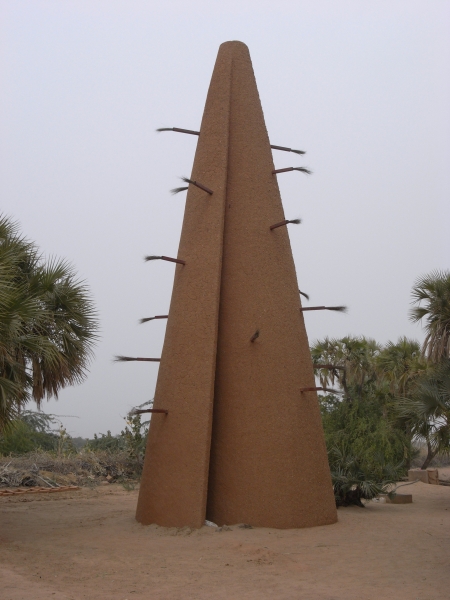Uninhabitable Objects
Dwellings between Imagination and Reality
Bündner Kunstmuseum, Chur, June 1 to August 25, 2013

Not Vital: Ház hőség és homokvihar ellen, 2006, Agadez, Nigéria. Fotó: Not Vital
With “Uninhabitable Objects” a topic is being analysed at the Bündner Kunstmuseum, which is of general social relevance. The dwelling – no matter how rudimentary – is of existential significance for human beings. This exhibition is about the subjective-imaginative debate on space and living concepts: “When is something inhabitable?” “Who lives there?” or “Could I live there?”
The selected works in one way or another all point to reality. In fact, they are images or models of dwellings, which are or were actually built. However, for the viewer they are de facto neither accessible nor inhabitable and therefore challenge their imagination. Precisely because dwellings are a central and everyday part of our lives, the ambiguities of artistic renderings provoke irritation as well as fascination. Rachel Whiteread, for example, had a Victorian house completely cast in concrete and had the shell removed, so that the former living space faces us as a mute memorial to absence. In contrast, the artists’ duo Gabriela Gerber and Lukas Bardill bring to life the military fake village Answeisen, by creating the illusion with clay and light that the house claddings are lived in. Bianca Brunner in her photo series Uninhabitable Objects constructs provisional shelters and takes photographs of them in a way, which leaves them strangely vague in their function as well as in their scale. Benjamin Appel builds a space-filling, life-size but hermetically sealed object with old furniture, which seems simultaneously familiar and forbidding. Not Vital, in turn, had many of his “inhabitable sculptures” actually made in Niger, in the Engadin or in Patagonia. Nevertheless, for political, climatic or geographic reasons occupancy even in these cases usually only happens in the imagination.


